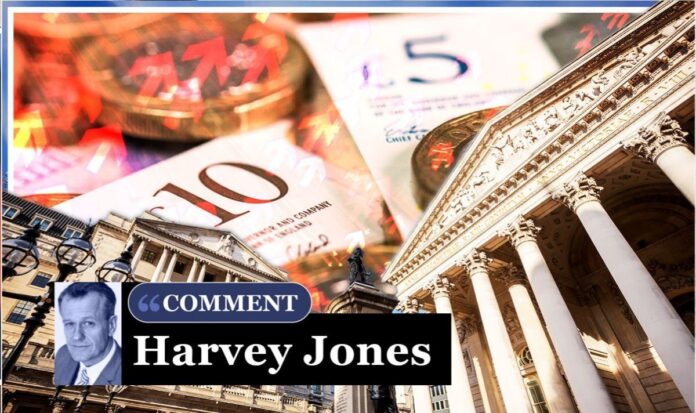The BoE’s rate-setting monetary policy committee (MPC) has hiked bank rate for 13 meetings in a row, from 0.1 percent in December 2021 to five percent today. It is widely expected to deliver a 14th successive increase on Thursday, lifting bank rate to 5.25 percent. There is a chance the MPC could go higher and lift rates to 5.5 percent, as it continues its desperate battle against rocketing inflation. Its policy of hiking borrowing costs is designed to take the heat out of the economy by making consumers and businesses feel poorer and less able to spend. It’s a simple and brutal plan and there is a strong case for saying the BoE has gone far enough and should top hiking rates now . That’s my stated view . Rising interest rates act with a long delay but are finally starting to bite as more fixed-rate mortgages expire and homeowners face much higher costs when they remortgage. Industry is struggling, too. UK manufacturing activity has just hit a seven-month low with a sharp decline in factory output. Inflation fell to 7.9 percent in June and a bigger drop is expected when July’s figures are published, as last year’s energy price spike falls out of the annual figures. The MPC won’t listen and is still expected to hike again in September and possibly November, too, which would lift base rates to 5.75 percent. Yet at some point even dozy BoE governor Andrew Bailey will wake up and stop the hikes. By the spring, interest rates could be falling instead of rising (Image: Getty) By early 2024, the MPC could be forced to start slashing interest rates as the global economy tanks. The big banks are scrambling to get ahead of the curve. They don’t want to lock into paying savers long-term rates of more than six percent when base rates are hurtling back towards the BoE’s target of just two percent. The same goes for annuity providers. Over the last 18 months, annuity rates have shot up by almost 50 percent, in a staggering reversal of fortunes. Until recently, 65-year-old pensioner with £100,000 would have got level lifteime income of £4,946 a year. Today they can get around £7,210 a year, the highest in 15 years. As soon providers get a sniff that interest rates will fall, annuity rates will follow. Now looks like a good time to lock into a two or five-year fixed-rate savings bond, or a guaranteed lifetime annuity. Today’s rates may be as good as it gets, even if the BoE hikes tomorrow. I’m not alone in this. Sarah Coles, head of personal finance at Hargreaves Lansdown, says that while easy access savings rates are based on where interest rates stand today (and are still rising as a result), rates on fixed-rate bonds are based on future expectations. “We’ve seen a flurry of savers fixing their rates while the going is good. It’s a sensible approach because fixed-rate savings bonds may well be around the peak.’ READ MORE: ‘Recession is only way to beat inflation’: Shock suggestion from economists Coles says there are still some good fixed-rate bonds out there but cautions: ‘Market-leading rates offering 6.2 percent over two years and 6.1 percent over one year have disappeared.’ I’ve reported on this phenomenon myself . The good news is that mortgage rates are falling, too. Average two-year fixed-rates recently peaked at 6.86 percent and have started to edge down with Barclays, TSB, HSBC and Nationwide all cutting. Today may prove a costly time to lock into a five-year fixed-rate mortgage, as it could look very expensive in a couple of years time, when it will still have three more years to run. This may be a good time to buy an annuity, though. Rates may only edge up slightly from here, if at all. As we get closer to peak interest rates, more savers and borrowers will have to make this kind of calculation. Second-guessing markets is never easy as they are unpredictable. But it’s something to bear in mind as the rate cycle looks set to turn again.


